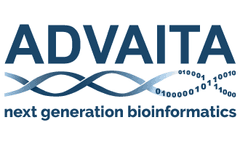Computational Biology Articles & Analysis
12 articles found
The development of new and effective drugs is a complex and multifaceted process that requires the collaboration of scientists from diverse fields, including chemistry, biology, and computational modeling. At the heart of this endeavor lies the art of drug design - the strategic and methodical approach to creating molecules that can effectively target and ...
The process of drug discovery is a complex and multifaceted endeavor, involving the integration of diverse scientific disciplines, including biology, chemistry, and computational science. At the heart of this endeavor lies the intricate relationship between drugs, their targets, and the diseases they aim to treat. ...
Through its integration of computer science, chemistry, biology, and physics, CADD has proven to be a pivotal force in driving the efficiency and precision of drug discovery processes. Understanding the Landscape of Computer-Aided Drug Design (CADD) Computer-Aided Drug Design, abbreviated as CADD, constitutes a ...
Drug discovery, the process of identifying compounds that can potentially treat diseases, has seen a significant transformation in recent years, thanks to advancements in computational biology and artificial intelligence (AI). In this article, we will delve into the fascinating world of drug-disease relationship analysis, an essential component of drug discovery, ...
The Perinatology Research Branch (PRB) is the only Clinical Branch in the Division of Intramural Research (DIR) of the National Institutes of Health (NIH) to focus its research on human pregnancy and unborn children. It is currently housed at the Detroit Medical Center in Detroit, Michigan through a service contract. The Branch has thrived in this environment, earning a national and international ...
Recently, Professor Yi Wen's research group and Professor Zhou Ruhong's research group from the School of Life Sciences, Zhejiang University jointly published a research paper titled: O-GlcNAcylation promotes pancreatic tumor growth by regulating malate dehydrogenase 1 in Nature Chemical Biology. This study revealed the molecular mechanism of O-GlcNAc glycosylation regulating ...
Some of my earliest memories are of accompanying her to medical school classes, which inspired me to eventually pursue a PhD in molecular biology and biochemistry. My studies brought me to the U.S., where my interests shifted towards computer science and after school, I landed a role where I could apply both my software engineering and molecular ...
As a 17-year-old, of course, I wanted to be cool, so I decided to pursue computer science and engineering rather than medicine. I was one of few classmates who had an email address, but had only gotten my first computer a number of days before school started. ...
For almost a decade, I have wanted to work in the field of computational biology. I wanted to learn and grow in that space, and always hoped to work at a place where my contributions could impact a greater cause. ...
The test uses single target sequence analyses of multiomics markers, computational biology and machine learning. "We have built a test that can 'read' cancer’s tissue-specific signal in blood on a fragment level," Universal Diagnostics' managing director, Christian Hense, said. ...
Having originally trained as an engineer biochemist, Parag's research is diverse and spans computational and experimental systems biology, cancer biology, and nanotechnology. ...
Malaria is a vector-borne infectious disease caused by protozoan parasite of the genus Plasmodium. The malaria vaccine which has been studied is designed to induce immunity to the sporozoite and to kill sporozoite-infected liver cells. A combination of bioinformatics approach and computational tools are used to screen and select antigen sequences as potential T-cell epitopes of supertype human ...








